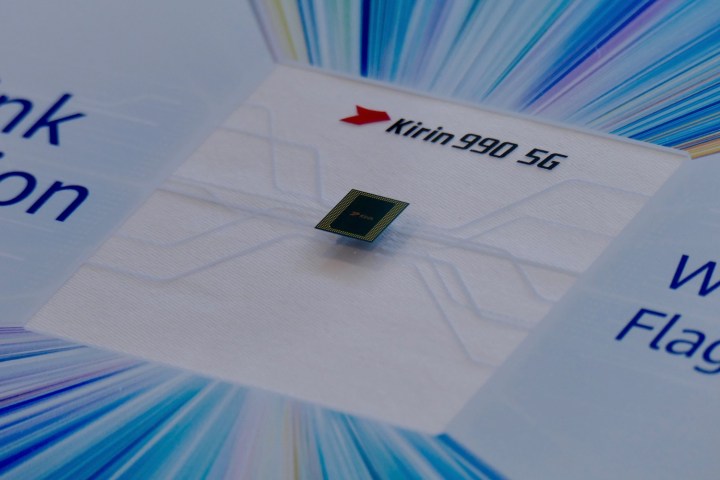
Huawei isn’t holding back with its new mobile processor, the Kirin 990. Not only does it have 5G, but it also has more artificial intelligence capabilities than ever, more raw power, and even better graphics and imaging performance than its predecessors. Apart from the specifications, Huawei isn’t holding back in making comparisons with Qualcomm’s star chip, the Snapdragon 855, either.
The Kirin 955 comes in two guises, a 4G chip and a 5G version, which the company says is the world’s first flagship 5G system-on-a-chip, based on the others available being multi-chip offerings. However, the Kirin 955 supports Sub-6
10 billion transistors
Built using a 7nm process, the Kirin 990 is small but manages to pack in an astonishing 10.3 billion transistors — more than any other mobile chipset available. Hooked up to a 5G signal, the chip could potentially max out at download speeds of 2.3Gbps and 4G/
The Kirin 990 5G has eight cores, comprising of two ARM Cortex 2.86Ghz cores, two 2.36GHz Cortex A76 cores, and four Cortex A55 1.95GHz cores. The GPU has been significantly upgraded over the Kirin 980, and is now a 16-core Mali G76, plus it supports both UFS 2.1 and UFS 3.0 memory standards, and has a Smart Cache for lower power consumption.
The Neural Processing Unit (NPU) has 4.7x higher performance than the Kirin 980, and is a massive 24x more efficient. Huawei said it supports 90% of the neural models available, giving developers huge scope for making apps. That’s all before we get to the new image noise level reduction tools, promising 30% less noise in stills and 20% less in video, all from a clever new Image Signal Processor (ISP) with some DSLR-level tech inside.
Snapdragon comparisons
Huawei made a point of comparing the Kirin 990’s performance to the Qualcomm Snapdragon 855 chip. It claims that overall, the Kirin 990’s single-core performance is 10% higher than the 855, and 9% higher on multi-core. The GPU has 6% higher performance over Qualcomm’s top chip, but more importantly it has 20% better power efficiency. It’s also saying that when using the 5G connection side of the 990, it takes less power than Qualcomm’s X50 modem too.
Fighting talk, without a doubt. Keep in mind, though, that Qualcomm is set to reveal its next flagship chip in December at its annual Snapdragon Summit, and it just might surpass the Kirin 990.
But Huawei’s problem isn’t about making strong processors or its technical ability. The chip will likely make its debut inside the Mate 30 series, due to launch on September 19. But due to the ongoing ban on U.S. firms doing business with Huawei, whether the phone will use Google services is unknown, which may affect where the Mate 30 goes on sale and its eventual success.
The Kirin 990 is destined to be a winner, based on the Kirin 980’s ability. Now, it needs the platform we all want (that means a Mate 30 with Android and Google Services onboard) to truly show off its skill.



